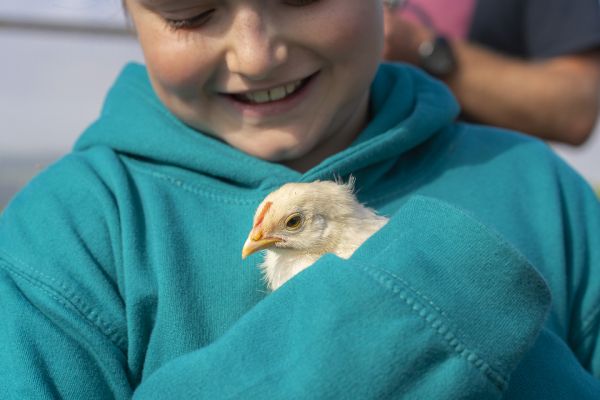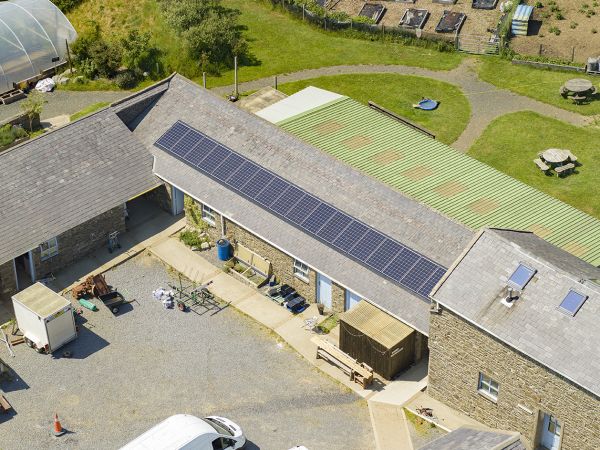Chris Martin, of The Children's Centre tells us how more sustainable practices at the charity's farm base are allowing it to plough more money into services:
The UNESCO Biosphere in which we live and work means different things to different people.
It offers a platform for all of us to discuss and reflect upon what we do and how and why we do it.
At our farm base on the outskirts of Douglas, The Children’s Centre embraced a more sustainable approach to all it does some years ago.
Careful purchasing, and management of waste, have been high on the list of to dos.
It is the savings from the use of sensors, timers and efficient products that allow us to be confident that we are spending our stakeholders' support appropriately.

A prudent approach is the right approach and we strive to ensure we do the right things for a sustainable future for us all.
Sometimes these things require a little more effort, a smidge more planning or different approach.
We have looked at our provision for the delivery of our services and arenas to assist young people, their families and our community.
When we say provision: these are unique spaces or arenas that individuals, families or groups would find of practical use on their journey.
A lot of our clients have complex needs and this requires safe spaces for our practitioners to operate and help those adversely affected in our society to heal, learn or just to 'be'.
These spaces all require for utilities in some form.
We had long harboured a desire to harness features of our environment to our advantage.
We had collected rainwater for many years to supply our Polytunnels and sought to harness the strong wind available to us.
However it was solar electric generation that became the most practical major step in our ‘Alongside the Grid’ approach.

We were determined to remove oil heating and replace it with a low-carbon option. We were developing existing spaces to enhance the farm experience. Helping to ensure our spaces are versatile and purposeful. It made sense to introduce new heating and lighting as we went.
With the help of valued supporters, we've been able to commence a programme of work that removed four oil-burning devices and replace them with two air source heat pumps.
These heat pumps are supplied with green energy developed by two banks of solar panels.
Our electricity generation is enough to power our site completely with a little over that will soon be offered back to the grid.
The introduction of a Tesla Power Wall has allowed the storage of this generated electricity. This provides both a buffer, if consumption exceeds generation or it is economically financially beneficial to charge from the grid at a low tariff and then sell when the rate per unit changes during periods of the day.
This is a complex area of our operation and relies on constant attention to the low and high-tariff periods of the day.
The system is in its infancy and leaves us with options of additional generating panels or adding in other generating processes, such as wind or ground source options.
The system is low maintenance and long life. The Tesla cell has an expected life of 25 years.
So our oil and electricity costs were around £10,000 a year but we will be cost neutral at six and half years at current utility prices.
Electricity costs are likely to increase and that is where the project would fall within a five-year window of neutrality.
To attempt to be carbon-neutral on the project, we calculated that the equivalent of 96 trees would offset the manufacture and installation of the system.
We are grateful to the Department of Environment, Food and Agriculture for the supply of 100 trees under the Chief Minister's recent planting directive. We will be matching the 100 trees and will be planting a new forest in our already-established conservation area.
The project has been made all the more easy by the two principal contractors. Martin Coyle at Manx Solar Electrical Ltd and his team have been excellent and have worked with Peter Titterton and Malcolm Blackburn at Organic Construction Services Ltd.
These two companies are experts in the management of energy and the reduction of waste. We have benefited greatly from their experience and guidance.
We are some small way further along the path to being a better and responsible organisation within our UNESCO Biosphere.
As well as aiding our financial viability, this project offers education and enlightenment to those who wish to follow our example or to learn more about what is possible. We welcome visits, on a planned basis.
We have to thank all our stakeholders, with a special mention in this instance for the Madenski Trust and Manx Lottery Trust, who considered us worthy of support for this exciting project.


